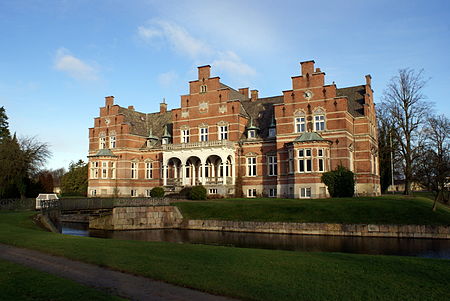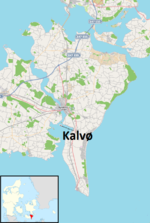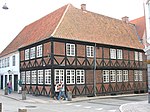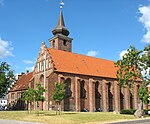Fuglsang Manor
1860s architecture in Denmark1869 establishments in DenmarkBuildings and structures associated with the Bølle familyBuildings and structures of the Daa familyBuildings and structures of the Neergaard family ... and 5 more
Historicist architecture in DenmarkHouses completed in 1869Listed buildings and structures in Guldborgsund MunicipalityManor houses in Guldborgsund MunicipalityMusic venues in Denmark

Fuglsang is a 19th-century manor house now operated by Det Classenske Fideicommis as a cultural centre as an active agricultural estate at Toreby on the island of Lolland, in southeastern Denmark. The estate was owned by members of the de Neergaard family from 1819 to 1947. The main building serves as a venue for classical concerts and other cultural activities. The cultural centre also includes Fuglsang Art Museum, located in a purpose-built building designed by British architect Tony Fretton.
Excerpt from the Wikipedia article Fuglsang Manor (License: CC BY-SA 3.0, Authors, Images).Fuglsang Manor
Nystedvej, Guldborgsund Municipality
Geographical coordinates (GPS) Address Website External links Nearby Places Show on map
Geographical coordinates (GPS)
| Latitude | Longitude |
|---|---|
| N 54.7219 ° | E 11.7977 ° |
Address
Fuglsang Herregaard (Fuglsang Herregård)
Nystedvej
4891 Guldborgsund Municipality
Region Zealand, Denmark
Open on Google Maps








